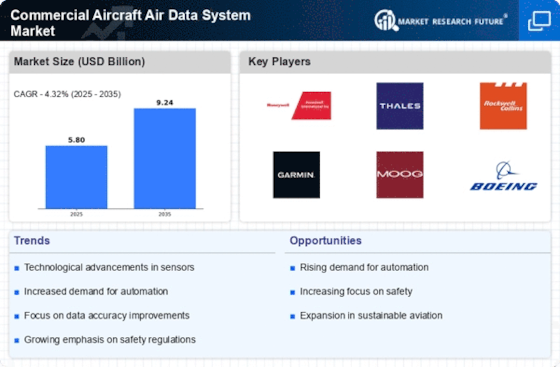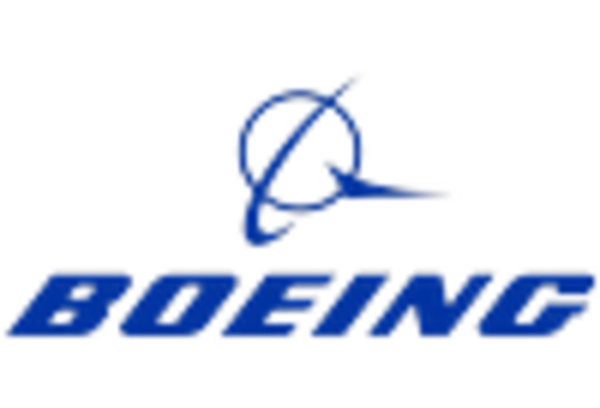Increased Demand for Fuel Efficiency
The Commercial Aircraft Air Data System Market is significantly impacted by the growing demand for fuel efficiency in aviation. Airlines are increasingly seeking to reduce operational costs and minimize their environmental footprint, leading to a heightened focus on optimizing aircraft performance. Advanced air data systems play a crucial role in achieving these objectives by providing precise data that enables better aerodynamic performance and fuel management. According to industry reports, fuel-efficient aircraft can reduce fuel consumption by up to 20%, which is a substantial saving for airlines. This trend is expected to drive investments in innovative air data systems that enhance fuel efficiency, thereby propelling market growth in the coming years.
Focus on Sustainable Aviation Practices
The Commercial Aircraft Air Data System Market is increasingly influenced by the aviation sector's focus on sustainable practices. As environmental concerns gain prominence, airlines are under pressure to adopt greener technologies and reduce their carbon emissions. Air data systems that enhance aircraft efficiency and performance are integral to achieving sustainability goals. Innovations such as lightweight materials and energy-efficient systems are being integrated into air data technologies to minimize environmental impact. The market is likely to see a shift towards systems that not only comply with environmental regulations but also contribute to the overall sustainability of aviation. This focus on sustainability is expected to drive demand for advanced air data systems in the foreseeable future.
Emerging Markets and Increased Air Travel
The Commercial Aircraft Air Data System Market is poised for growth due to the emergence of new markets and an increase in air travel demand. As economies in various regions continue to develop, the number of air travelers is expected to rise significantly. This surge in demand for air travel necessitates the expansion of airline fleets, which in turn drives the need for advanced air data systems. Emerging markets, particularly in Asia and Africa, are witnessing a rapid increase in air traffic, prompting airlines to invest in modern aircraft equipped with state-of-the-art air data systems. This trend suggests a robust growth trajectory for the market as airlines adapt to meet the rising demand for air travel.
Regulatory Compliance and Safety Standards
The Commercial Aircraft Air Data System Market is heavily influenced by stringent regulatory compliance and safety standards imposed by aviation authorities. Organizations such as the Federal Aviation Administration (FAA) and the European Union Aviation Safety Agency (EASA) mandate rigorous testing and certification processes for air data systems. These regulations ensure that systems meet high safety and performance benchmarks, thereby fostering consumer confidence in air travel. As airlines and manufacturers strive to comply with these regulations, investments in advanced air data systems are likely to increase. This focus on safety not only enhances operational reliability but also contributes to the overall growth of the market, as compliance becomes a critical factor in aircraft design and manufacturing.
Technological Advancements in Air Data Systems
The Commercial Aircraft Air Data System Market is experiencing a surge in technological advancements, particularly in sensor technology and data processing capabilities. Enhanced sensors provide more accurate measurements of air pressure, temperature, and speed, which are critical for flight safety and efficiency. The integration of advanced algorithms and artificial intelligence into air data systems allows for real-time data analysis, improving decision-making processes for pilots and ground control. As a result, the market is projected to grow at a compound annual growth rate of approximately 5.2% over the next five years, driven by the demand for more reliable and efficient aircraft systems. This trend indicates a shift towards more sophisticated air data systems that can adapt to the evolving needs of modern aviation.

















Leave a Comment